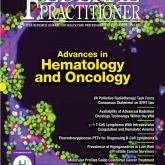User login
Implementation of Dietary Education Within a Multidisciplinary Team Approach to Improve Treatment Accuracy and Efficiency in Prostate Cancer External Beam Radiation Therapy
Background: Prostate cancer is the most common cancer in the Veterans Health Administration. Radiation is an important treatment option for prostate cancer patients. Imaging is done before each daily radiation treatment to ensure the radiation beam is aimed accurately. Imaging can be inaccurate due to excess gas or stool in the rectum, which alters the treatment field and leads to delays in the daily treatment schedule, increased radiation exposure due to re-imaging, repetitive staff treatment delivery interventions, and an unsatisfactory veteran experience.
Methods: A quality improvement project utilizing A3.9 box process improvement methodology (problem solving template) was undertaken to address identified gastrointestinal concerns hindering daily treatment. A dietitian integrated services into the radiation oncology clinic by providing dietary education and counseling to avoid gasproducing foods and manage bowel regularity for prostate cancer patients. Daily images were reviewed for accuracy. For 3 months prior to intervention, we examined daily treatment images and documented any interruption in treatment delivery from gas or stool in the rectum as a nutrition-related defect. Initial data analysis revealed that 62 of 195 (31.79%) daily treatment deliveries experienced nutrition-related defects.
Results: As a result of changing the radiation therapy process to include dietary education to patients, we experienced a 53% reduction rate in nutrition-related defects (from 31.79% to 14.87%). Calculated cost avoidance showed an annual savings of approximately $19,300 with
implementation of a multidisciplinary approach. A total of 120 daily treatment visits and 90 patient treatment hours can be saved annually with this approach.
Conclusions: This project improved overall clinic function by implementing a multidisciplinary approach to prostate cancer radiation oncology care, increased patient’s satisfaction, reduced excess radiation exposure, and improved department efficiency.
Background: Prostate cancer is the most common cancer in the Veterans Health Administration. Radiation is an important treatment option for prostate cancer patients. Imaging is done before each daily radiation treatment to ensure the radiation beam is aimed accurately. Imaging can be inaccurate due to excess gas or stool in the rectum, which alters the treatment field and leads to delays in the daily treatment schedule, increased radiation exposure due to re-imaging, repetitive staff treatment delivery interventions, and an unsatisfactory veteran experience.
Methods: A quality improvement project utilizing A3.9 box process improvement methodology (problem solving template) was undertaken to address identified gastrointestinal concerns hindering daily treatment. A dietitian integrated services into the radiation oncology clinic by providing dietary education and counseling to avoid gasproducing foods and manage bowel regularity for prostate cancer patients. Daily images were reviewed for accuracy. For 3 months prior to intervention, we examined daily treatment images and documented any interruption in treatment delivery from gas or stool in the rectum as a nutrition-related defect. Initial data analysis revealed that 62 of 195 (31.79%) daily treatment deliveries experienced nutrition-related defects.
Results: As a result of changing the radiation therapy process to include dietary education to patients, we experienced a 53% reduction rate in nutrition-related defects (from 31.79% to 14.87%). Calculated cost avoidance showed an annual savings of approximately $19,300 with
implementation of a multidisciplinary approach. A total of 120 daily treatment visits and 90 patient treatment hours can be saved annually with this approach.
Conclusions: This project improved overall clinic function by implementing a multidisciplinary approach to prostate cancer radiation oncology care, increased patient’s satisfaction, reduced excess radiation exposure, and improved department efficiency.
Background: Prostate cancer is the most common cancer in the Veterans Health Administration. Radiation is an important treatment option for prostate cancer patients. Imaging is done before each daily radiation treatment to ensure the radiation beam is aimed accurately. Imaging can be inaccurate due to excess gas or stool in the rectum, which alters the treatment field and leads to delays in the daily treatment schedule, increased radiation exposure due to re-imaging, repetitive staff treatment delivery interventions, and an unsatisfactory veteran experience.
Methods: A quality improvement project utilizing A3.9 box process improvement methodology (problem solving template) was undertaken to address identified gastrointestinal concerns hindering daily treatment. A dietitian integrated services into the radiation oncology clinic by providing dietary education and counseling to avoid gasproducing foods and manage bowel regularity for prostate cancer patients. Daily images were reviewed for accuracy. For 3 months prior to intervention, we examined daily treatment images and documented any interruption in treatment delivery from gas or stool in the rectum as a nutrition-related defect. Initial data analysis revealed that 62 of 195 (31.79%) daily treatment deliveries experienced nutrition-related defects.
Results: As a result of changing the radiation therapy process to include dietary education to patients, we experienced a 53% reduction rate in nutrition-related defects (from 31.79% to 14.87%). Calculated cost avoidance showed an annual savings of approximately $19,300 with
implementation of a multidisciplinary approach. A total of 120 daily treatment visits and 90 patient treatment hours can be saved annually with this approach.
Conclusions: This project improved overall clinic function by implementing a multidisciplinary approach to prostate cancer radiation oncology care, increased patient’s satisfaction, reduced excess radiation exposure, and improved department efficiency.
